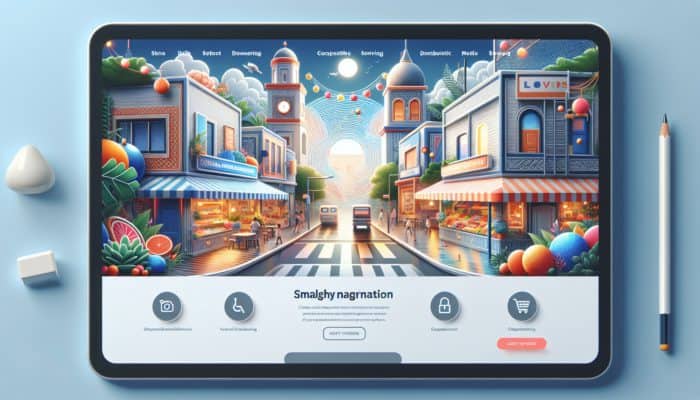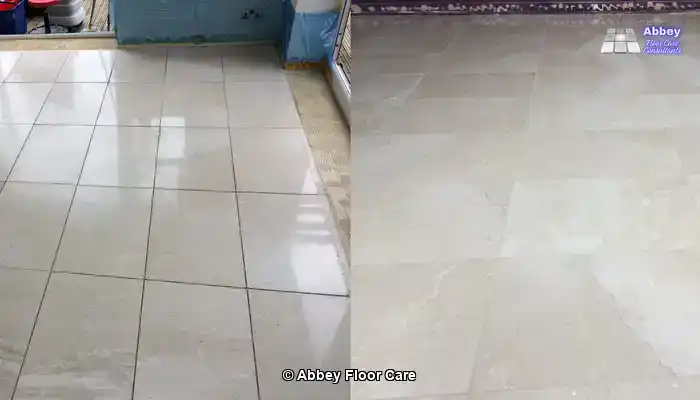Effective Strategies to Enhance Your Click-Through Rates Significantly
Maximizing Content Success by Creating Compelling Titles

Creating captivating titles is essential because they form the initial impression of your content and act as powerful incentives for user clicks. An expertly crafted title not only grabs attention but also effectively summarizes the main idea of the content it represents. The significance of an engaging title cannot be overstated; it has the potential to greatly impact your click-through rates. When formulating impactful titles, consider several key characteristics:
- Conciseness: Aim for brevity while clearly communicating the primary message.
- Clarity: Ensure that the title is straightforward and easily understood at first glance.
- Intrigue: Spark curiosity to encourage clicks without misleading your audience.
- Keyword Inclusion: Integrate relevant keywords to boost search visibility.
- Emotional Appeal: Evoke an emotional reaction to connect with your audience.
- Unique Selling Proposition: Highlight what makes your content stand out from the competition.
- Action-Oriented Language: Use verbs and phrases that inspire action.
- Target Audience Focus: Directly engage your intended readership.
By developing titles that embody these qualities, you can achieve a noticeable rise in click-through rates. Conducting A/B tests on various title versions can help refine your approach, ensuring it resonates with audience interests and search patterns.
Understanding the Role of Meta Descriptions in User Engagement and Clicks
Meta descriptions play a critical role in providing succinct overviews of your content. They serve as a connection between search results and user engagement, offering a brief summary that can substantially influence a reader's decision to click through. The effectiveness of meta descriptions hinges on their ability to captivate users while incorporating relevant keywords. To create persuasive meta descriptions, follow these best practices:
- Length: Keep it within 150-160 characters for optimal visibility in search results.
- Active Voice: Use active voice to create a sense of urgency and compelling calls to action.
- Keyword Optimization: Naturally incorporate primary keywords while avoiding keyword stuffing.
- Engagement: Include questions or calls-to-action to encourage interaction.
- Unique Descriptions: Avoid duplicating descriptions to ensure relevance and originality.
- Audience Awareness: Tailor the language to resonate with your target audience's preferences.
- Clarity and Relevance: Make sure the description accurately reflects the content of the page.
- Emotional Hook: Use language that piques curiosity or evokes emotional responses.
Implementing these strategies can significantly enhance your click-through rates. A well-optimized meta description acts as a powerful marketing tool, inviting users to engage more deeply with your content.
Enhancing User Engagement with Visual Content
Visual content is pivotal for enriching the overall appeal and engagement levels of your material. Images, infographics, and videos can capture attention in ways that text alone cannot achieve. Well-chosen visuals complement your written content, providing clarity and enhancing the user's experience. To maximize their effectiveness, select visuals that are aesthetically appealing and relevant to the material presented. High-quality images and strategically positioned videos can significantly boost click-through rates.
Incorporating visual elements can decrease bounce rates and extend the time users spend on your page, fostering a more favorable perception of the content. Infographics, in particular, can condense intricate information into easily digestible formats, increasing shareability across social media. Furthermore, videos can serve as engaging introductions, motivating users to explore your content further. By emphasizing the importance of visuals, you can create a more immersive content experience that captivates users and sustains their interest.
Expert Insights for Enhancing Content and Increasing Click-Through Rates

Real-World Examples of Effective Optimization Strategies
Analyzing real-world examples provides invaluable insights into effective techniques for optimizing click-through rates. Companies like BuzzFeed and Upworthy have demonstrated the effectiveness of engaging titles and visuals in their content strategies. For example, BuzzFeed frequently employs listicles that combine catchy titles with vibrant images, resulting in significant user engagement and increased click-through rates.
To implement similar strategies, consider these actionable steps:
1. Examine top-performing articles in your niche to identify patterns in titles, visuals, and content structure.
2. Experiment with different formats, including listicles, how-tos, and case studies.
3. Use analytics tools to monitor which styles yield the highest engagement and adjust your strategy accordingly.
4. Regularly refresh older content with updated titles and visuals to enhance its relevance and appeal.
Incorporating these successful strategies into your content creation process can inspire innovative approaches that drive greater engagement and visibility.
Analyzing Click-Through Rate Trends for Enhanced Content Creation
Understanding click-through rate trends is crucial for content creators aiming to stay ahead of the competition. Recent analyses indicate a growing significance of mobile optimization, as an increasing number of users engage with content on mobile devices. Additionally, the rise of voice search is reshaping how users interact with search engines, influencing their click-through behaviors.
For instance, recent studies reveal that mobile-friendly pages generally enjoy higher click-through rates, highlighting the importance of responsive design. As users increasingly depend on voice search, optimizing content for natural language queries can further improve visibility and engagement.
To align with these trends, content creators should focus on:
– Staying updated with changes in user behavior and technological advancements.
– Regularly refreshing SEO strategies to meet evolving algorithm requirements.
– Analyzing competitor strategies and industry trends for swift adaptation.
By keeping informed about these trends, you can produce content that resonates with current user behaviors and preferences, ultimately boosting overall engagement.
Steps to Ensure Continuous Improvement of Click-Through Rates

Ongoing improvement is vital for maintaining high click-through rates. Adopting a structured approach enables content creators to effectively refine their optimization strategies over time. Here’s a systematic guide to ensure continuous optimization:
1. Set Clear Objectives: Establish specific goals for click-through rates that align with your content strategy.
2. Monitor Performance: Use analytics tools to consistently track CTR metrics and identify observable patterns.
3. A/B Testing: Experiment with variations of titles, content formats, and visuals to determine what resonates best with your audience.
4. Seek User Feedback: Gather insights from users through surveys or feedback forms to understand their preferences.
5. Implement Changes: Apply findings from analyses and testing to adjust content accordingly.
6. Review Competitor Strategies: Regularly analyze competitor tactics to identify new strategies they may be employing.
By committing to this ongoing process, you ensure that your content remains relevant, engaging, and optimized for maximum click-through rates.
Understanding the Impact of Click-Through Rate Optimization on SEO Performance
Exploring the Connection Between Click-Through Rates and SEO Rankings
Click-through rates (CTR) are closely linked to SEO rankings, as search engines like Google consider user engagement a crucial metric. High CTRs indicate to search engines that your content is relevant and valuable, which can positively affect your rankings. Conversely, low CTRs may signal to search engines that users do not find your content useful, potentially reducing its visibility.
Search engines use various data points, including CTR, to evaluate content quality. A high CTR can lead to improved visibility in search results, attracting even more clicks and further enhancing your rankings. Therefore, optimizing for click-through rates not only benefits user engagement but is also vital for improving your SEO performance.
To leverage this relationship, focus on creating enticing titles and engaging descriptions that resonate with your target audience. This approach can drive more clicks while signaling relevance to search engines, establishing a positive feedback loop that benefits both CTR and SEO.
Strategies for Enhancing SEO Through CTR Optimization
Improving SEO through click-through rate optimization involves several strategic approaches. By refining titles, meta descriptions, and overall content, you can enhance user engagement, leading to improved visibility in search engines. Here are effective strategies to consider:
1. Optimize Titles: Craft titles that are both descriptive and evoke curiosity and relevance for your audience.
2. Enhance Meta Descriptions: Write engaging meta descriptions that clearly convey the content's value while incorporating primary keywords.
3. Focus on User Intent: Understand the search intent behind keywords and ensure your content meets those needs directly.
4. Utilize Structured Data: Implement schema markup to provide richer search results, increasing CTR.
5. Mobile Optimization: Ensure your content is mobile-friendly, as a significant portion of users access content via mobile devices.
Implementing these strategies not only boosts click-through rates but also positively influences overall SEO performance, creating a cumulative effect over time.
Long-Term Benefits of CTR Optimization for SEO
The long-term advantages of optimizing click-through rates extend beyond immediate results, contributing to sustained SEO success. A consistent focus on CTR can lead to higher search rankings, increased organic traffic, and improved user engagement. Over time, these factors collaborate to strengthen overall SEO health.
Regularly optimizing content for CTR helps maintain visibility in search results, ensuring your content continues to attract clicks. Higher organic traffic driven by optimized click-through rates creates greater opportunities for conversions and engagement. This initiates a virtuous cycle where improved engagement metrics signal quality to search engines, potentially augmenting rankings further.
As your content gains recognition for its relevance and quality, it builds authority within its niche. This authority not only enhances your credibility but also attracts backlinks from reputable sources, further elevating your SEO profile.
Effects of CTR Optimization on Keyword Rankings
CTR optimization directly affects keyword rankings by indicating relevance and user satisfaction to search engines. When users frequently click on your content for specific keywords, it signals to search engines that your content effectively meets their needs. Higher CTRs can enhance keyword performance because search engines reward content that engages users.
Moreover, optimizing for CTR can help you rank for long-tail keywords, which are often less competitive yet highly valuable. Concentrating on these keywords while ensuring engaging content will likely lead to higher click-through rates, reinforcing your position in search results.
Incorporating strategies to boost CTR, such as improved titles and compelling descriptions, creates a synergy where better keyword performance leads to increased visibility and user interaction. By maximizing these elements, you can achieve a sustainable increase in keyword rankings over time.
Metrics for Measuring the Success of CTR Optimization on SEO Performance
Evaluating the success of click-through rate optimization requires an analytical approach, emphasizing several key performance indicators (KPIs). Monitoring changes in rankings, organic traffic, and engagement metrics provides insights into the effectiveness of your strategies.
Key methods and tools for evaluating the impact of CTR optimization include:
1. Google Analytics: Use this tool to track CTR data, organic traffic trends, and user behavior on your site.
2. Search Console: Analyze performance reports to assess keyword performance and click-through rates over time.
3. A/B Testing: Conduct A/B testing to compare different content variations and their effects on CTR and overall performance metrics.
4. Heatmaps: Utilize heatmapping tools to visualize user engagement patterns, identifying where users click and how they interact with your content.
By consistently reviewing these metrics, you can gauge the impact of your CTR optimization efforts on SEO performance, allowing for informed adjustments to your strategy.
Strategies for Optimizing Content to Achieve Higher Click-Through Rates
Using A/B Testing to Fine-Tune Content for Enhanced CTR
A/B testing is an effective approach for improving click-through rates by comparing different content versions to identify which performs better. This data-driven technique supports informed decisions based on user preferences. To implement A/B tests, follow several critical steps that can significantly enhance your content’s appeal.
Start by identifying specific elements to test, such as titles, meta descriptions, or visual components. Create two or more variations of the chosen element, ensuring each version is distinct yet relevant to the same audience. Conduct the tests by directing a subset of your audience to each version while closely monitoring engagement and click-through rates.
Once the testing period concludes, analyze the results to determine which variation achieved the highest CTR. Use statistical significance to verify the outcomes. Based on these insights, implement the winning variation across your content, and continue testing other elements to perpetually refine your approach.
This ongoing process of A/B testing nurtures a culture of continuous improvement, ensuring that your content remains engaging and optimized for maximum clicks.
Best Practices for Effective CTR Optimization
Adhering to best practices for click-through rate optimization can significantly boost user engagement and visibility. Here are the top five practices to implement:
- Clear Calls-to-Action: Ensure your content includes compelling calls-to-action that motivate users to click.
- Mobile Optimization: Design content that is easily accessible and visually appealing on mobile devices.
- Regular Content Updates: Keep your content fresh and relevant by routinely updating titles, visuals, and information.
- SEO Best Practices: Optimize titles, meta descriptions, and headers with relevant keywords to enhance discoverability.
- User-Centric Design: Focus on creating a seamless user experience that facilitates easy navigation and engagement.
By following these best practices, content creators can improve their click-through rates, driving greater engagement and visibility in a highly competitive digital landscape.
Leveraging User Feedback for Continuous CTR Enhancement
User feedback is an invaluable asset for optimizing click-through rates. By actively seeking input from your audience, you can pinpoint strengths and weaknesses in your content. Effective strategies for gathering and utilizing user feedback include:
1. Surveys and Polls: Create short surveys or polls to gauge user preferences and opinions regarding your content.
2. Feedback Forms: Integrate feedback forms on your website to encourage users to share their thoughts easily.
3. Engagement Metrics: Analyze metrics such as bounce rates, time on page, and click-through rates to gauge user satisfaction.
4. Social Media Listening: Monitor social media channels for mentions and discussions related to your content to capture user sentiment.
Once feedback is collected, categorize insights to identify common themes and actionable items. Implement necessary adjustments based on this feedback to ensure that your content continually aligns with user expectations and preferences. This ongoing dialogue with your audience fosters a sense of community and enhances the overall effectiveness of your content strategy.
Insights Gained from Analyzing Competitor CTR Strategies
Examining your competitors' content strategies can yield valuable insights into effective CTR optimization techniques. By scrutinizing their approaches, you can adapt successful elements to enhance your own content. Start by identifying primary competitors within your niche and evaluating their click-through rates relative to their content.
Focus on their titles, meta descriptions, and visual elements, noting what resonates well with their audience. Tools like SEMrush and Ahrefs can provide data on their performance metrics and keyword strategies. Look for common trends, such as emotional triggers in titles or the use of video content, that may contribute to higher engagement.
After gathering insights, adapt these tactics to align with your brand and audience. However, ensure that any changes remain authentic to your voice and mission. By leveraging competitor analysis, you can refine your content strategies and potentially increase your own click-through rates.
How SEO Enhances Click-Through Rates
Search engine optimization (SEO) plays a vital role in improving click-through rates. By optimizing for visibility and relevance, content creators can attract more users to their content. To enhance CTR through SEO, focus on these strategies:
1. Keyword Research: Conduct thorough keyword research to identify terms that align with user intent and search behavior.
2. Title Tag Optimization: Create title tags that are not only keyword-rich but also compelling enough to motivate clicks.
3. Meta Description Enhancement: Write engaging meta descriptions that provide a clear value proposition while including relevant keywords.
4. Quality Content Creation: Ensure that your content provides value, is well-structured, and engages users to minimize bounce rates.
By implementing these SEO strategies, you not only enhance your visibility in search results but also establish a foundation that supports higher click-through rates. This holistic approach to content optimization can significantly impact your overall online presence.
Key Benefits of Optimizing Content for Click-Through Rates
Link Between CTR Optimization and Increased User Engagement
Optimizing content for higher click-through rates directly leads to enhanced user engagement. When titles and descriptions effectively capture user interest, visitors are more likely to interact with the content. Engagement metrics, such as time spent on page and social shares, typically improve as users find the content relevant and appealing.
This increased engagement signals to search engines that your content is valuable, resulting in improved visibility in search results. As users continue to interact with your content, it creates a cycle of positive reinforcement, where higher engagement leads to better rankings, which in turn attracts more clicks.
Moreover, engaging content encourages users to explore additional resources on your site, fostering a deeper connection with your brand and increasing the likelihood of conversions. By prioritizing CTR optimization, you can create an ecosystem of engagement that benefits both users and your overall content strategy.
The Connection Between Higher CTR and Conversion Rates
Higher click-through rates are strongly correlated with improved conversion rates. As more users click on your content, the chances for them to take desired actions—such as signing up for newsletters, making purchases, or engaging with your services—increase significantly.
The relationship between CTR and conversions often depends on the quality of the content itself; well-optimized titles and descriptions attract the right audience, thereby increasing the likelihood of meaningful interactions. For instance, a compelling call-to-action paired with engaging content can guide users seamlessly through the conversion process.
To enhance conversion rates through CTR, focus on crafting content that not only attracts clicks but also effectively communicates value. This ensures that users feel motivated to take action once they arrive at your site, fostering a more fruitful user experience.
Improving Brand Visibility Through CTR Optimization
Optimizing content for click-through rates can substantially boost brand visibility. As click-through rates rise, so does the number of users engaging with your content, leading to greater exposure and awareness of your brand. High CTRs often result in more shares and backlinks, further amplifying your reach across various platforms.
As users interact with your content and share it within their networks, your brand gains credibility and authority in your niche. This organic growth can lead to a stronger online presence, attracting even more users over time. Enhanced brand visibility not only drives traffic but also establishes your organization as a trusted resource within your industry.
By prioritizing CTR optimization, you lay the foundation for sustained brand growth, allowing you to connect with a wider audience and solidify your market position.
Essential Tools and Techniques for Effective Click-Through Rate Optimization
Utilizing Analytics for Effective CTR Performance Tracking
Analytics tools are crucial for monitoring click-through rate performance and identifying areas for improvement. By leveraging these tools, content creators can gain valuable insights into user behavior, engagement metrics, and the overall effectiveness of their optimization strategies.
To effectively track CTR performance, begin by setting up Google Analytics on your website. This tool allows you to monitor traffic sources, user interactions, and CTR metrics across various pieces of content. Pay close attention to user pathways, identifying where users drop off and which content drives clicks.
In addition to Google Analytics, consider using tools like Google Search Console to access performance reports that provide insights into organic search clicks and impressions. This information can guide your optimization efforts, enabling you to adjust titles and descriptions based on real-time data.
Regularly reviewing these analytics equips you with the knowledge needed to refine your content strategy and enhance click-through rates over time.
Top Tools for Optimizing Click-Through Rates
Several effective tools can aid in optimizing click-through rates, each serving unique purposes in the content creation and optimization process. Here are three top CTR optimization tools:
- Google Analytics: Provides comprehensive insights into user behavior, engagement metrics, and CTR performance across your website.
- SEMrush: Offers competitive analysis and keyword research tools, helping you understand your competitors’ CTR strategies and how to optimize your own.
- Crazy Egg: Utilizes heat mapping technology to visualize how users interact with your content, assisting in enhancing user experience and engagement.
These tools enable content creators to make data-driven decisions, ensuring that their optimization strategies are effective and aligned with user preferences.
Techniques to Enhance Engagement in Your Content
Creating engaging content is essential for boosting click-through rates. Several techniques can increase the appeal of your content, leading to improved user engagement and interaction.
Start by using compelling headlines that spark curiosity and reflect the content's inherent value. Incorporating relevant visuals, such as images and videos, can further enhance interest and sustain user engagement. Clear calls-to-action should be strategically placed throughout the content to guide users toward desired actions.
Utilizing storytelling techniques can also make your content more relatable, allowing users to connect emotionally with the material. Breaking up text with subheadings, bullet points, and whitespace improves readability, making it easier for users to digest information quickly.
By implementing these techniques, you can create content that captivates your audience, encouraging them to click through and engage further.
Implementing A/B Testing for Click-Through Rate Improvement
A/B testing is crucial for optimizing click-through rates, allowing content creators to compare different content versions to determine which yields better performance. The implementation process begins by identifying specific elements to test, such as headlines, images, or calls-to-action.
Create two or more distinct variations of the content, ensuring that each version differs in only one element to maintain clear results. Use your website’s analytics or A/B testing software to randomly direct traffic to each version, closely monitoring engagement and CTR over a designated period.
After the testing phase, analyze the data to determine which version performed better in terms of user engagement and clicks. Implement the winning variation and continue to test other elements as part of an ongoing process. This continuous experimentation cycle fosters ongoing improvement in your content strategy, ultimately enhancing click-through rates.
Effectively Leveraging SEO Strategies to Boost Click-Through Rates
Leveraging SEO strategies to enhance click-through rates is essential for maximizing visibility and user engagement. Effective SEO not only improves your rankings but also makes your content more appealing to users.
Begin with comprehensive keyword research to identify terms that align with user intent, then optimize your titles and meta descriptions by incorporating these keywords. Craft engaging titles that evoke curiosity, paired with informative meta descriptions, to significantly boost click-through rates.
Utilizing structured data can enhance search results, potentially increasing click visibility through rich snippets, which also positively impacts CTR. Additionally, ensure that your content is mobile-friendly, as this is increasingly critical in today’s digital landscape.
By integrating these SEO strategies, you can create content that not only attracts clicks but also drives meaningful engagement with your audience.
Frequently Asked Questions
What does click-through rate (CTR) signify?
Click-through rate (CTR) is a metric that measures the percentage of users who click on a link compared to the total number of users who view the link. It is commonly used to assess the effectiveness of online advertising and email campaigns.
Why is optimizing for CTR important?
Optimizing for CTR is crucial as it directly impacts user engagement, traffic, and search engine rankings. Higher CTRs indicate relevant and appealing content, signaling to search engines that your content deserves promotion.
How can I enhance my titles for improved CTR?
To improve titles for better CTR, focus on making them concise, clear, and intriguing. Incorporate relevant keywords and emotional triggers, and consider using numbers or questions to engage readers.
What role do meta descriptions play in CTR?
Meta descriptions summarize a page's content and can significantly impact CTR. A well-crafted meta description that includes relevant keywords and a compelling call-to-action can motivate users to click on your link in search results.
How often should I update my content for optimal CTR?
Regularly updating your content is essential for maintaining CTR. Aim to review and refresh content at least every few months to ensure it remains relevant and engaging for users.
Which tools can I utilize to track CTR?
Tools like Google Analytics, SEMrush, and Google Search Console are effective for tracking CTR. They provide insights into user behavior, engagement metrics, and performance across various pieces of content.
How does mobile optimization influence CTR?
Mobile optimization significantly affects CTR as more users access content via mobile devices. A mobile-friendly design improves user experience, leading to higher engagement and click-through rates.
What common mistakes should be avoided in CTR optimization?
Common mistakes include keyword stuffing, creating misleading titles, neglecting mobile optimization, and failing to regularly update content. Avoiding these pitfalls can enhance the effectiveness of your CTR strategies.
Can A/B testing improve my CTR?
Yes, A/B testing can significantly enhance CTR by allowing you to compare different content versions. This data-driven approach helps identify what resonates with your audience, leading to more effective optimization strategies.
How can user feedback contribute to improving CTR?
User feedback provides valuable insights into what engages your audience. By collecting and analyzing feedback, you can identify strengths and weaknesses in your content, allowing for targeted improvements that enhance click-through rates.
Join us on X for more insights!
The Article Optimising Content for Click-Through Rates: Boost Your Clicks was first published on https://marketing-tutor.com
The Article Boost Your Clicks: Optimising Content for Better CTR Was Found On https://limitsofstrategy.com
The Article Optimising Content for Better CTR: Boost Your Clicks First Appeared ON
: https://ad4sc.com














Leave a Reply